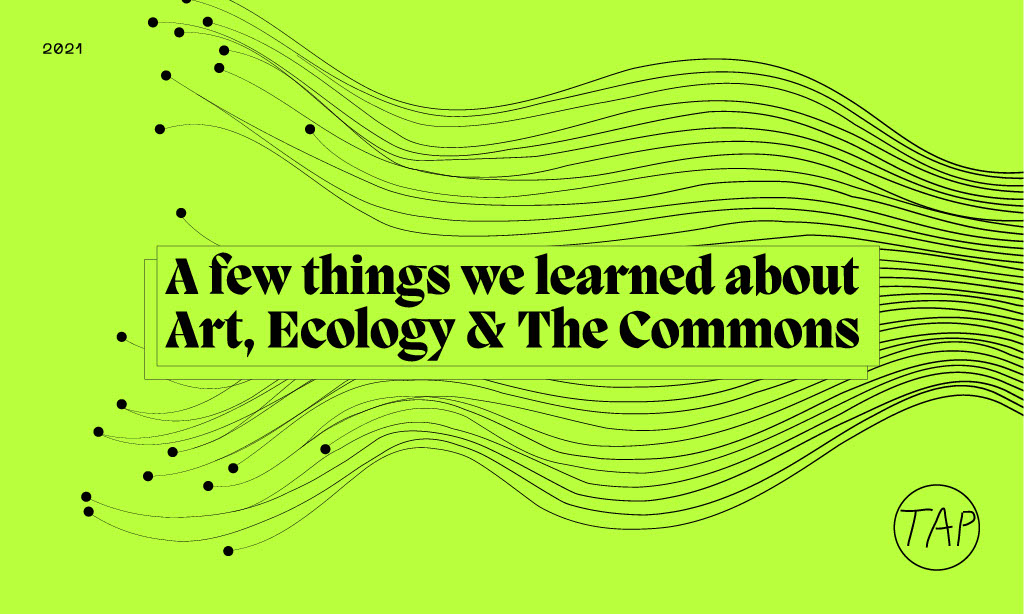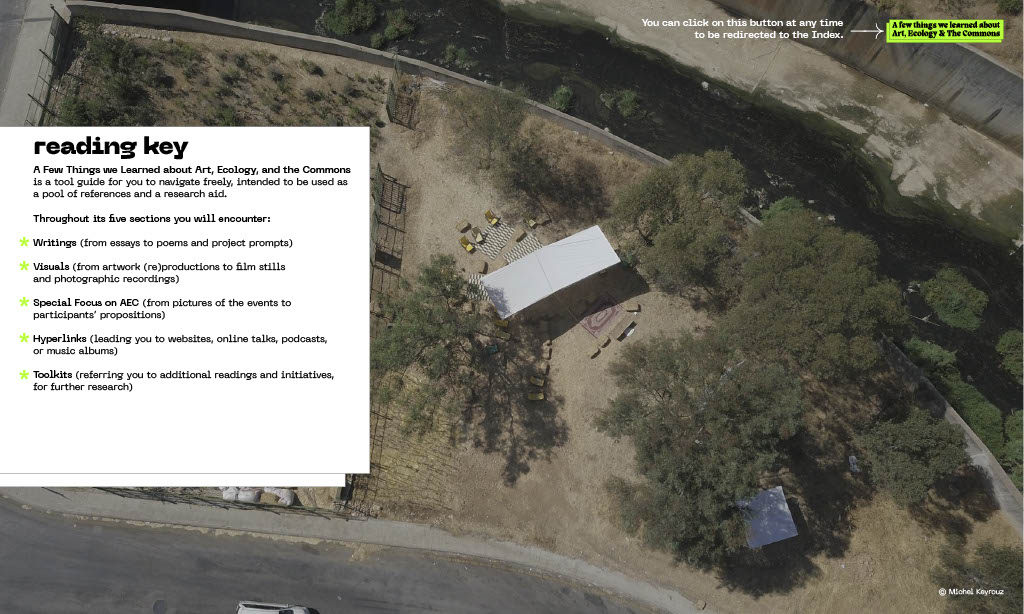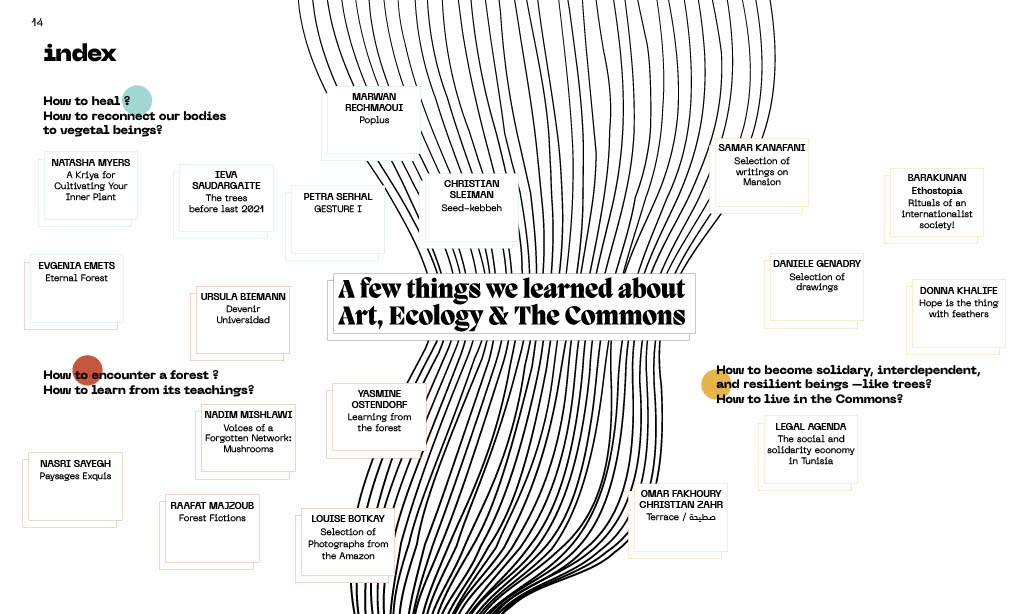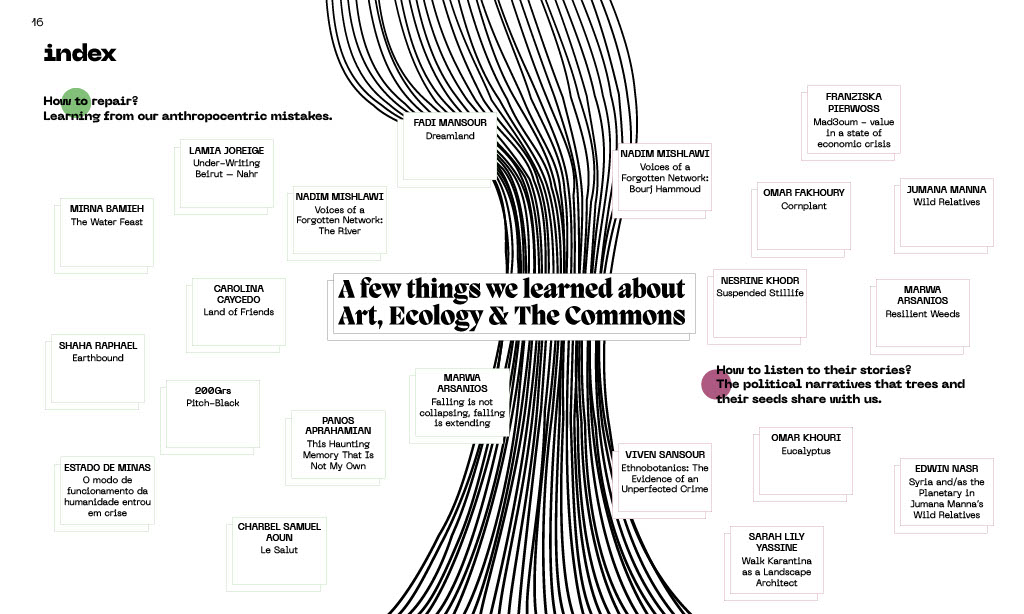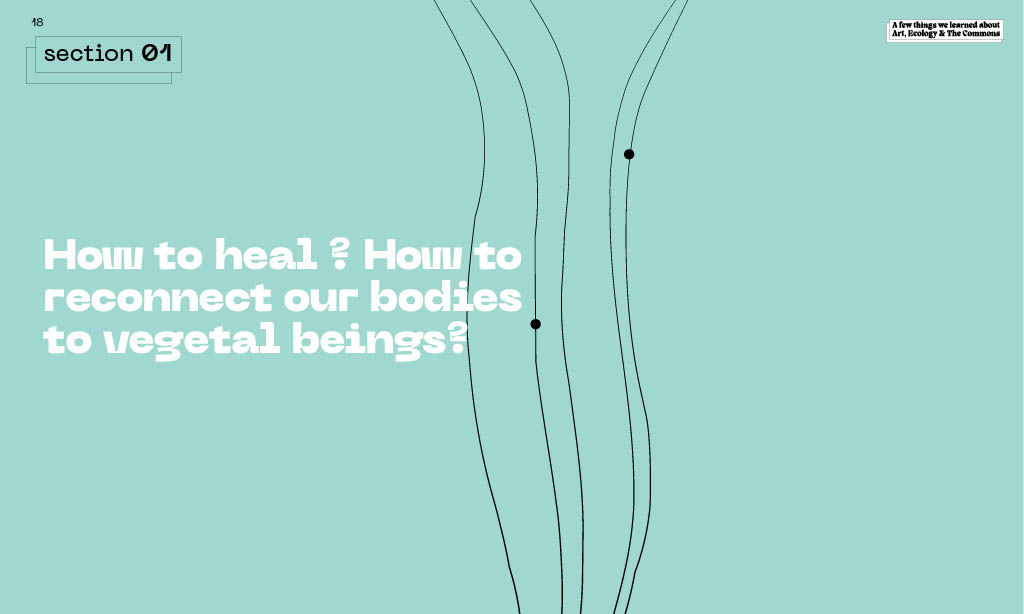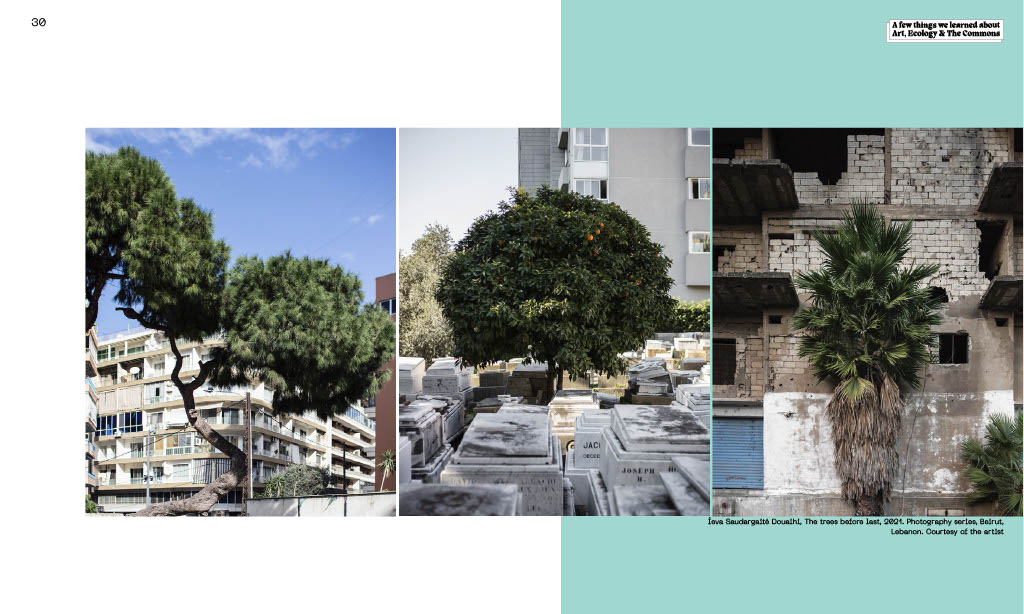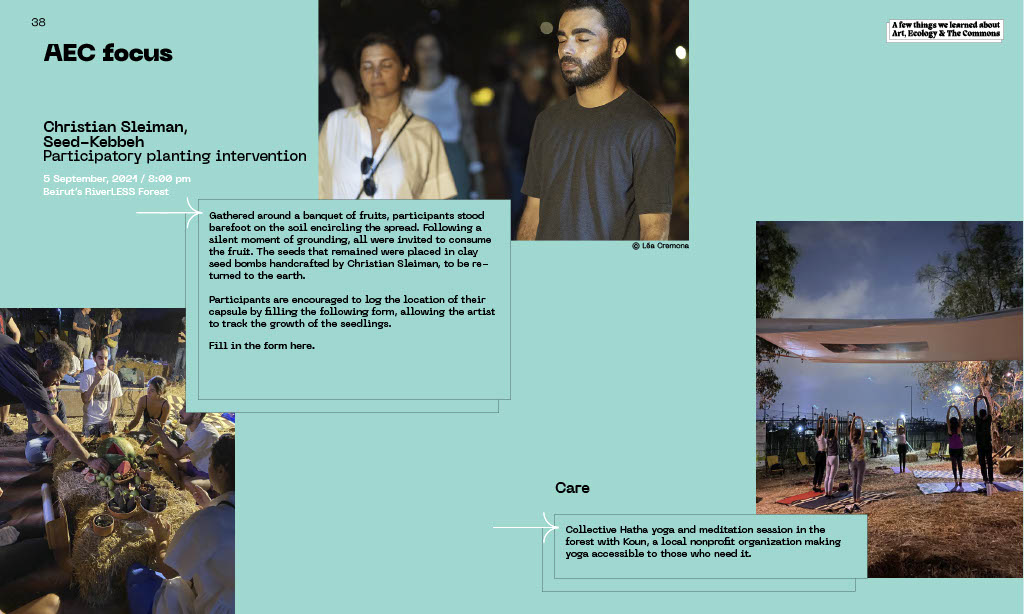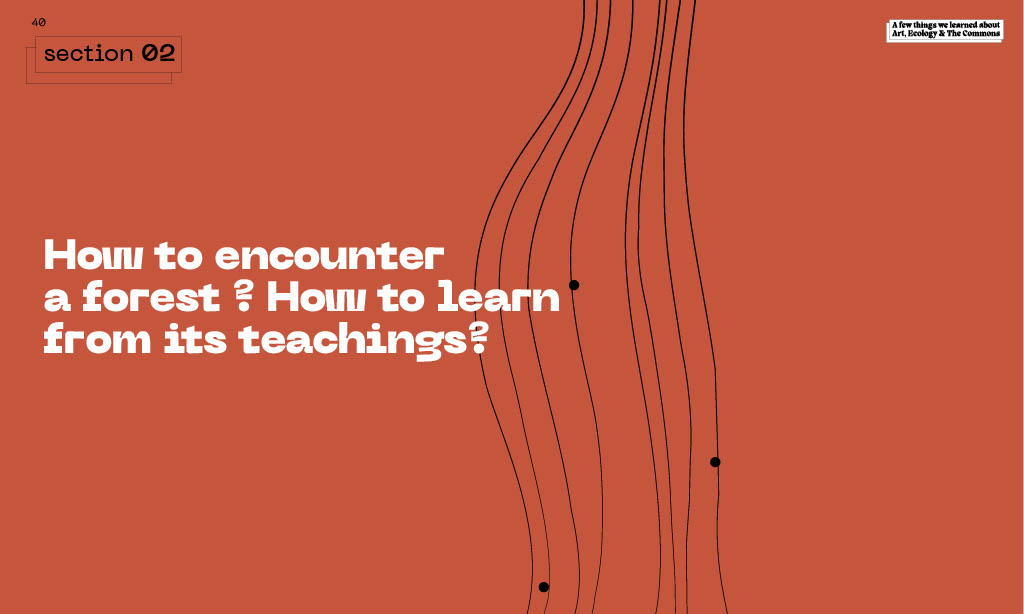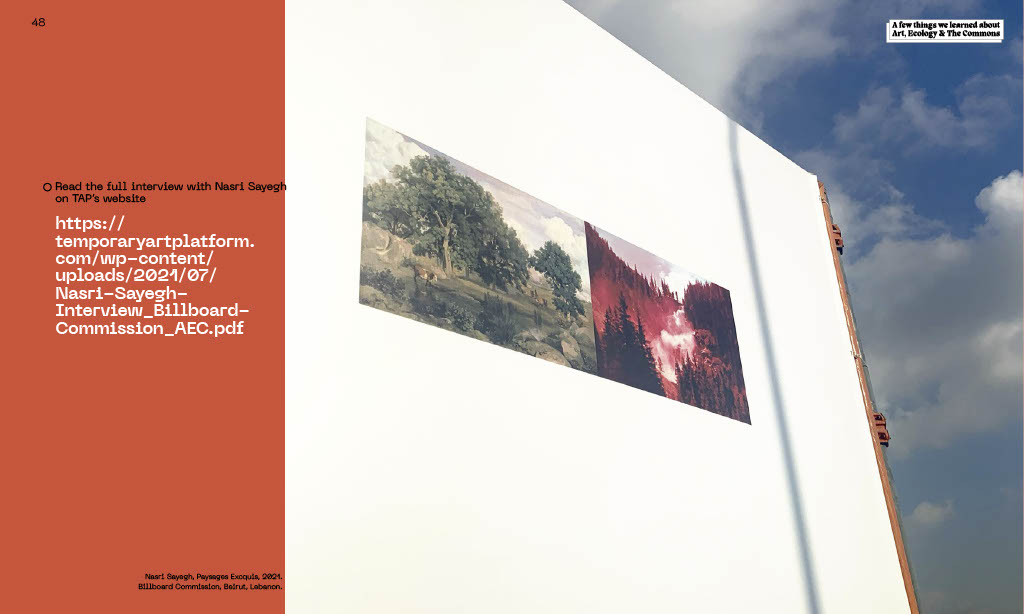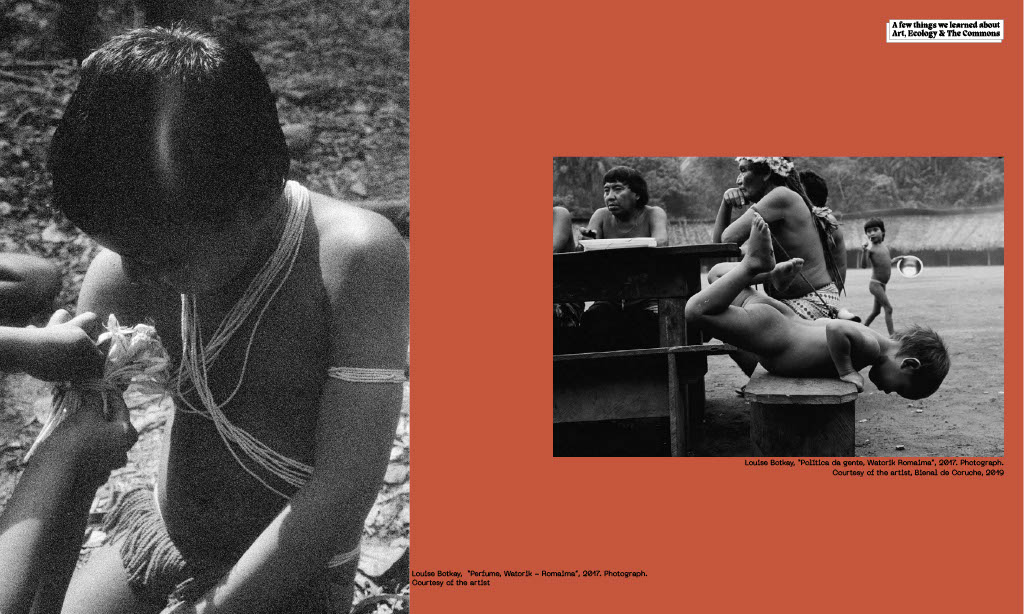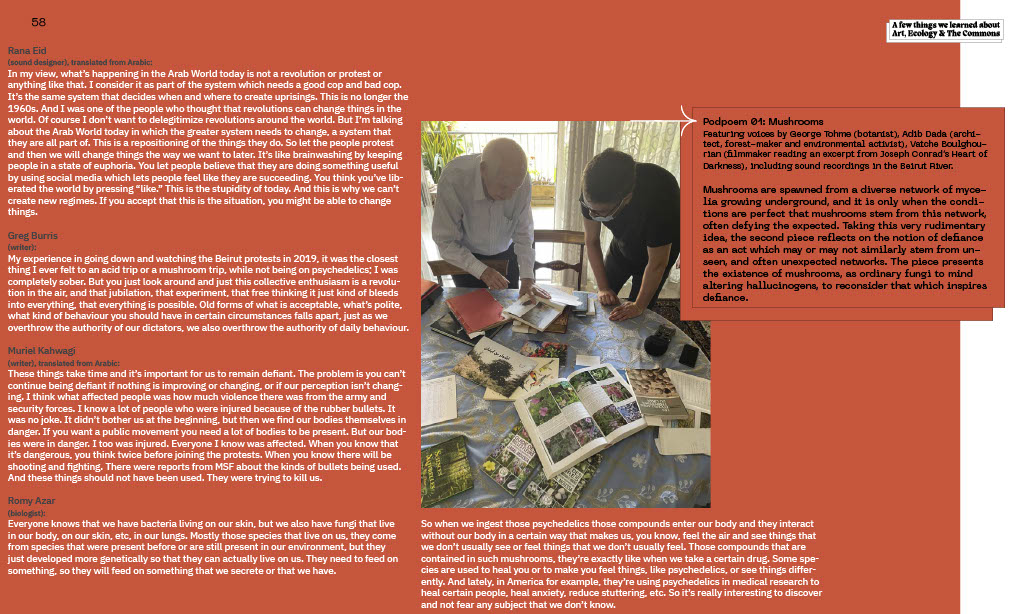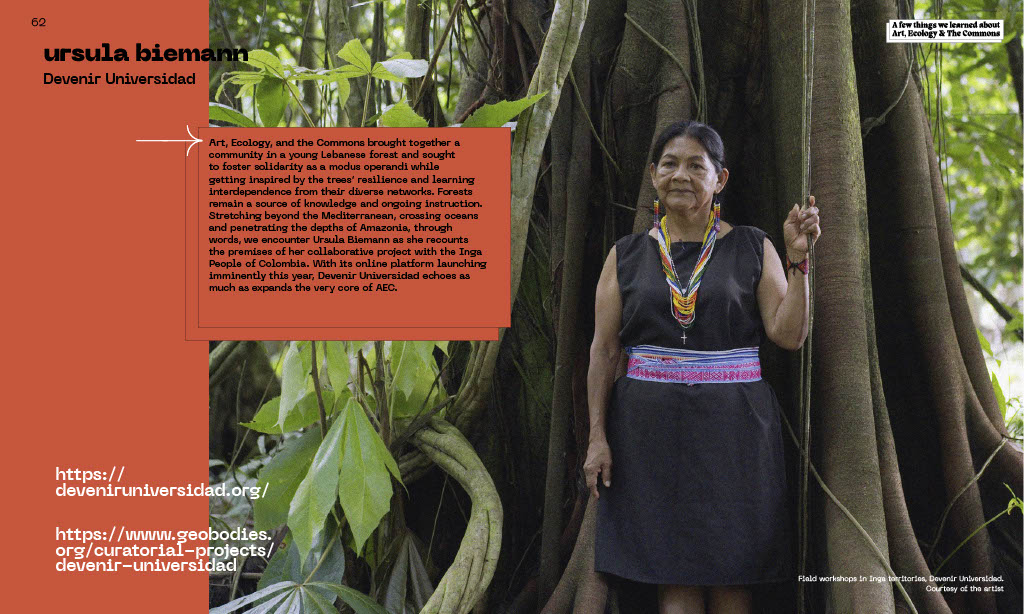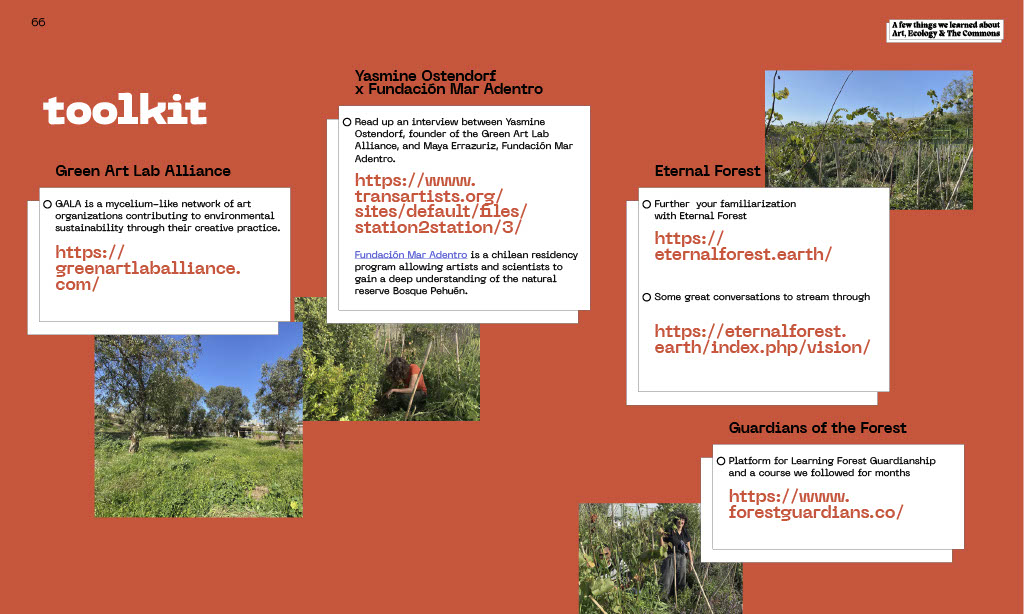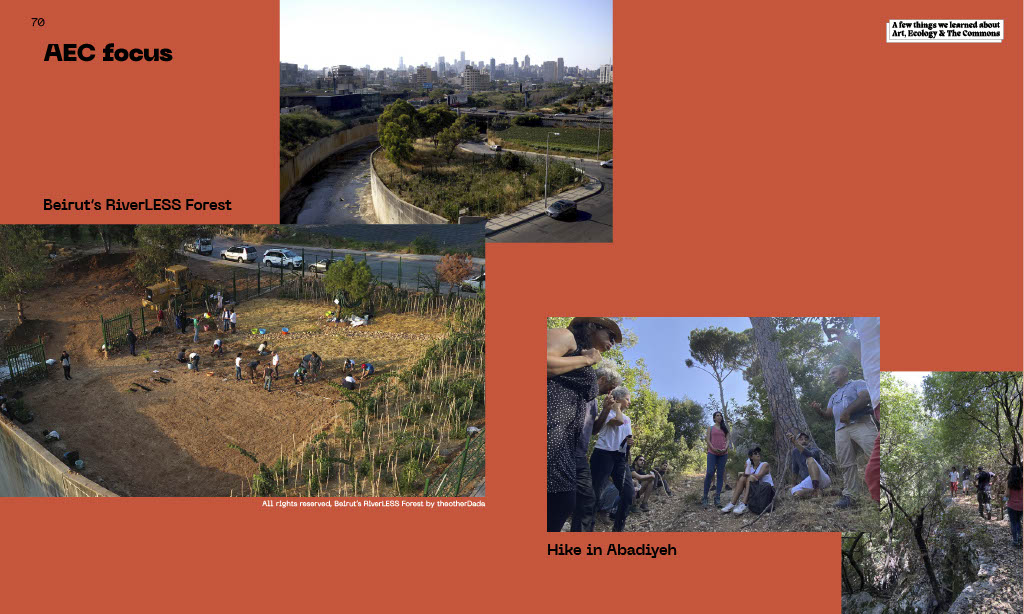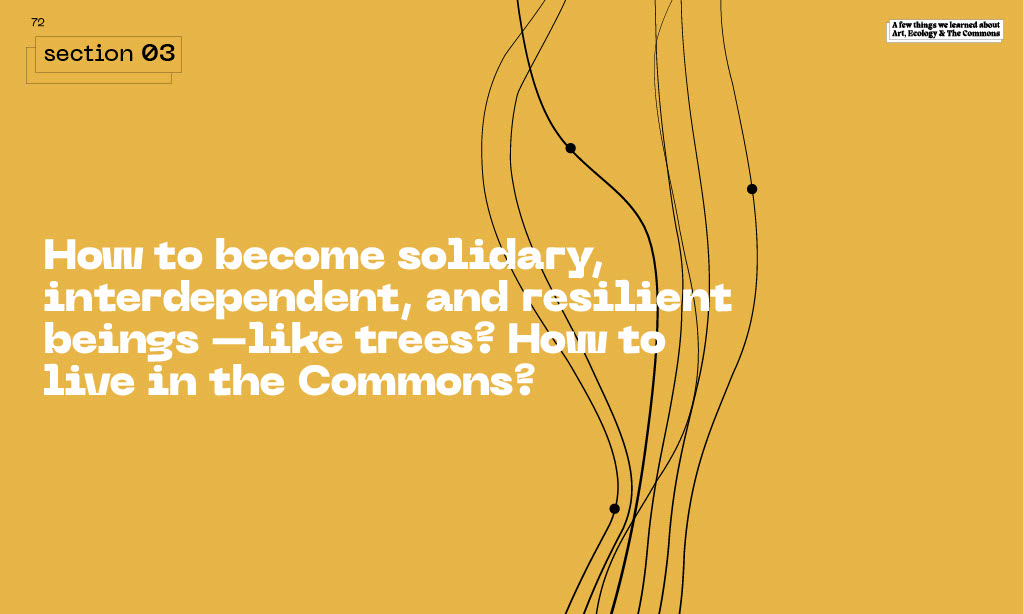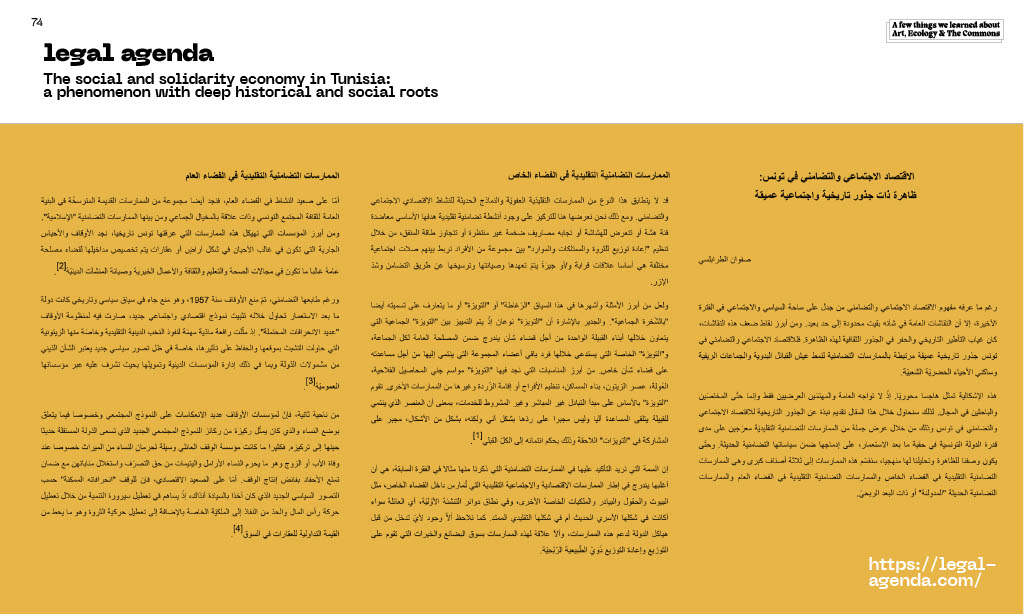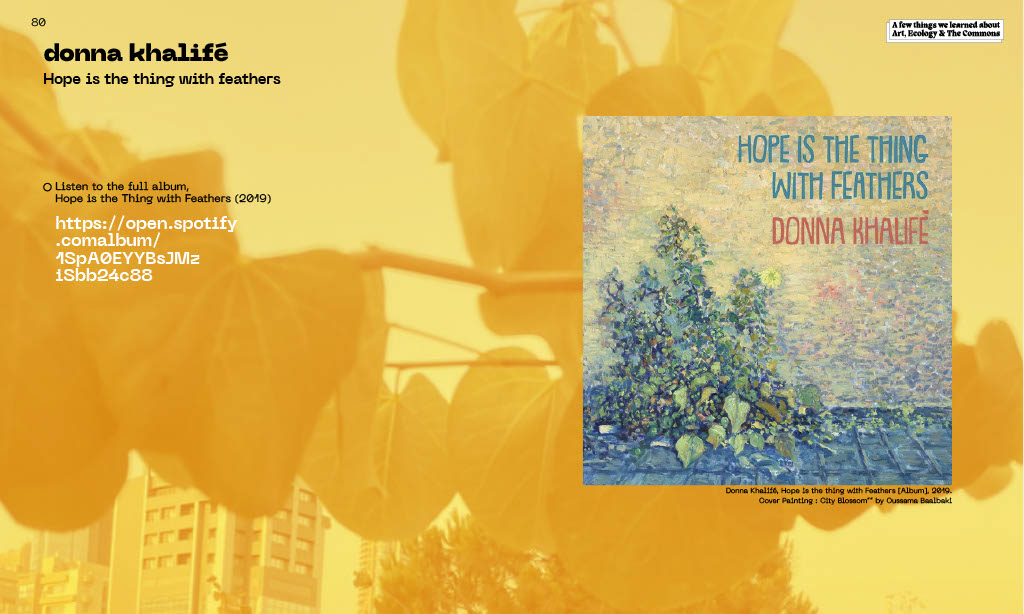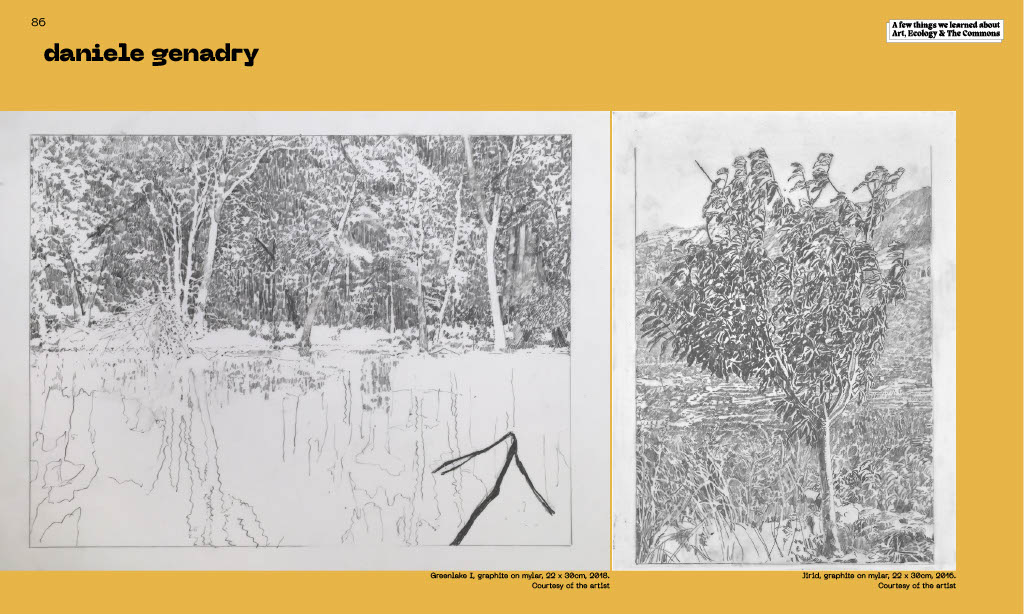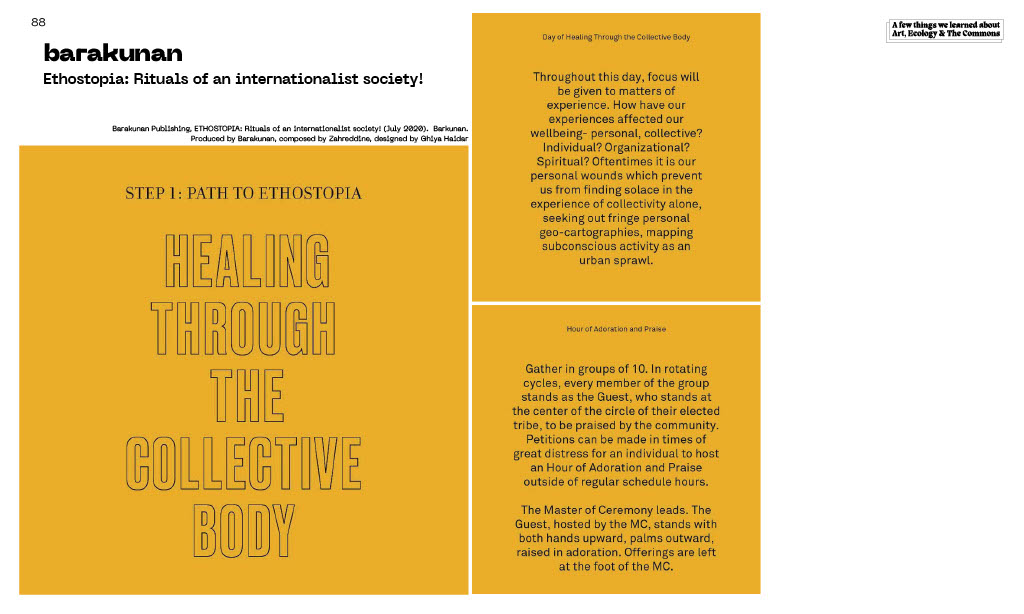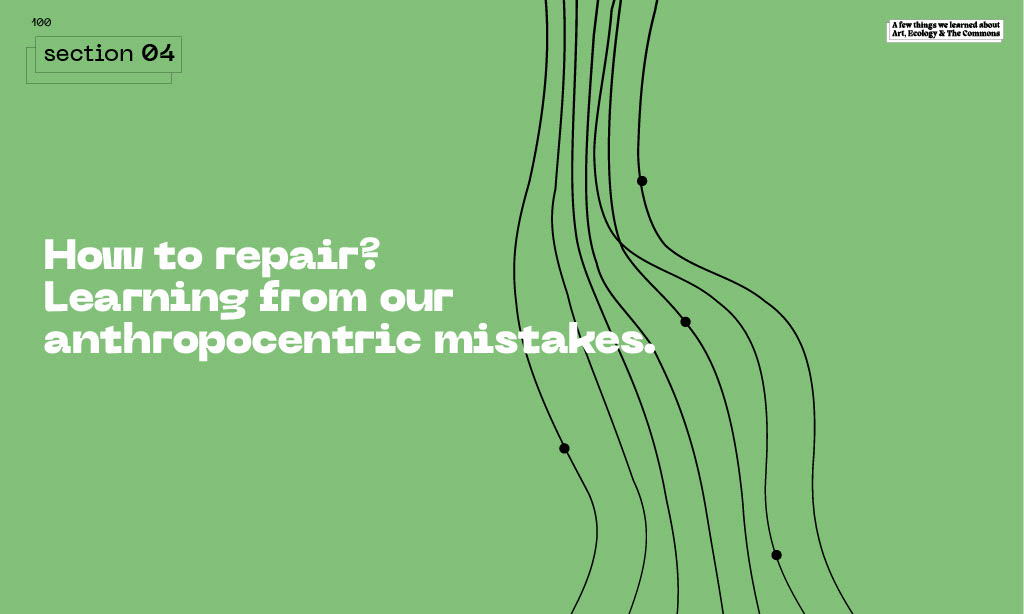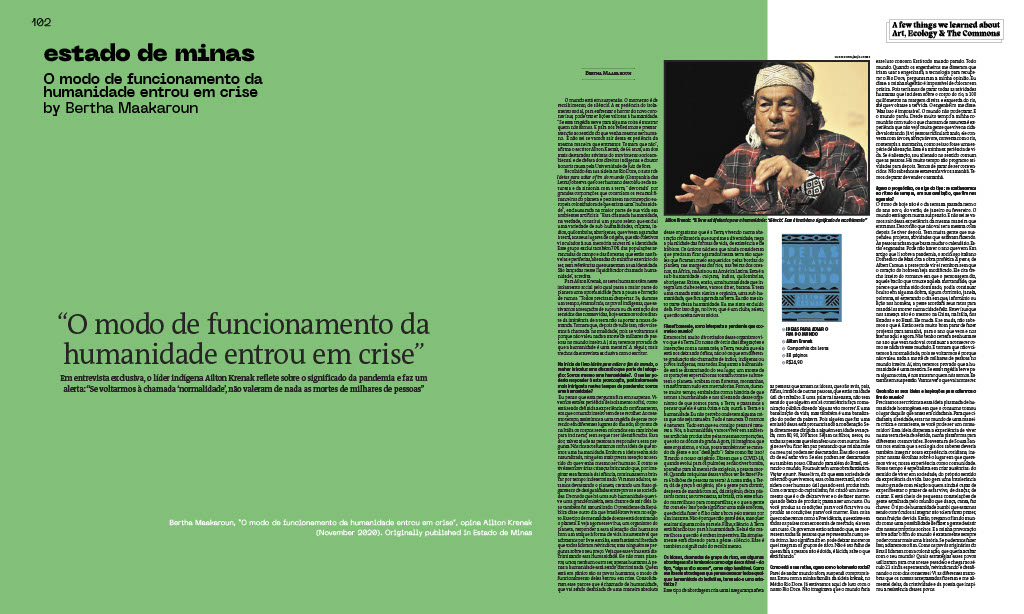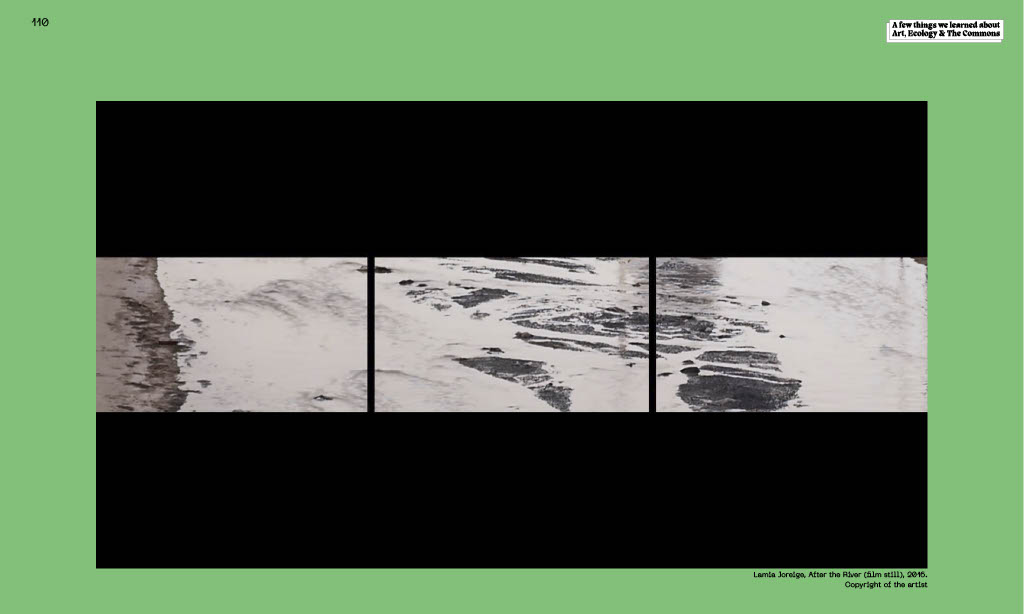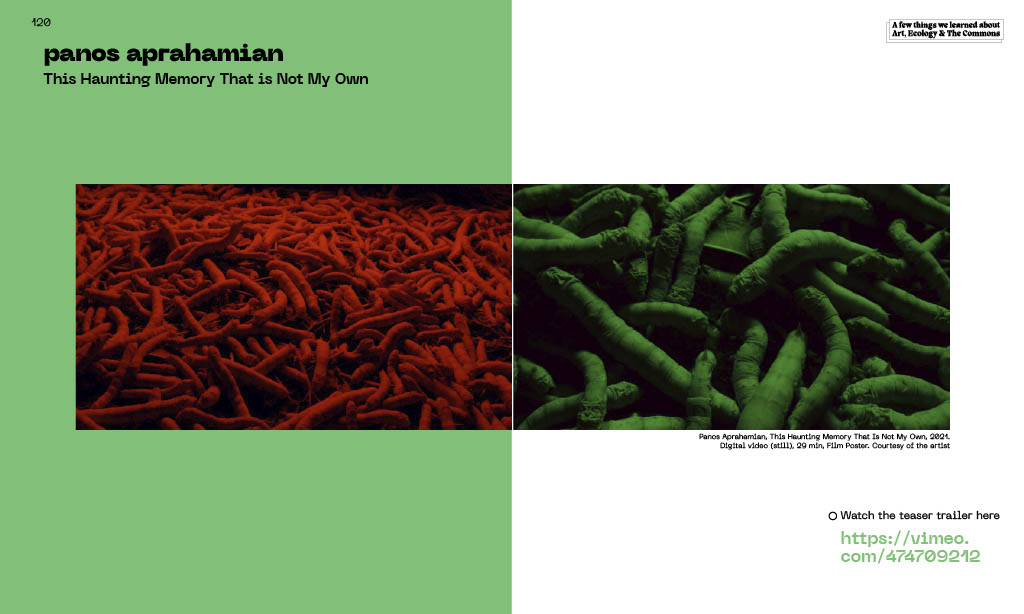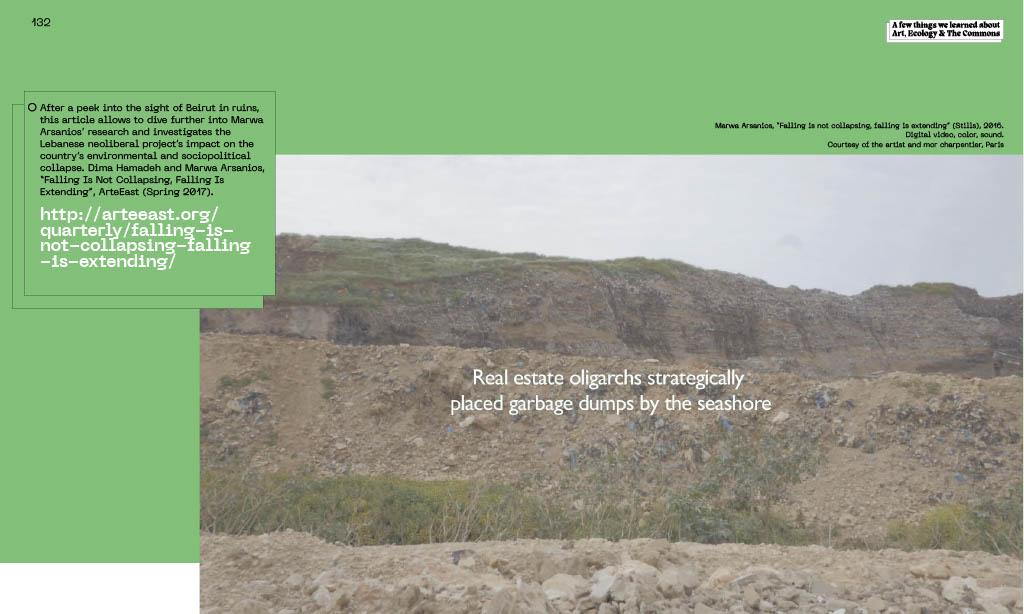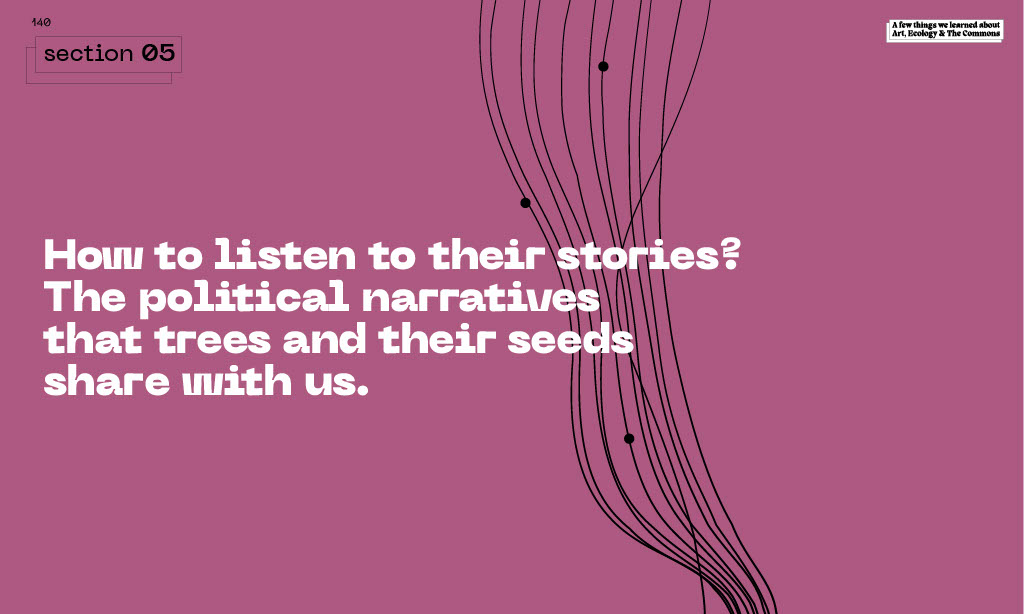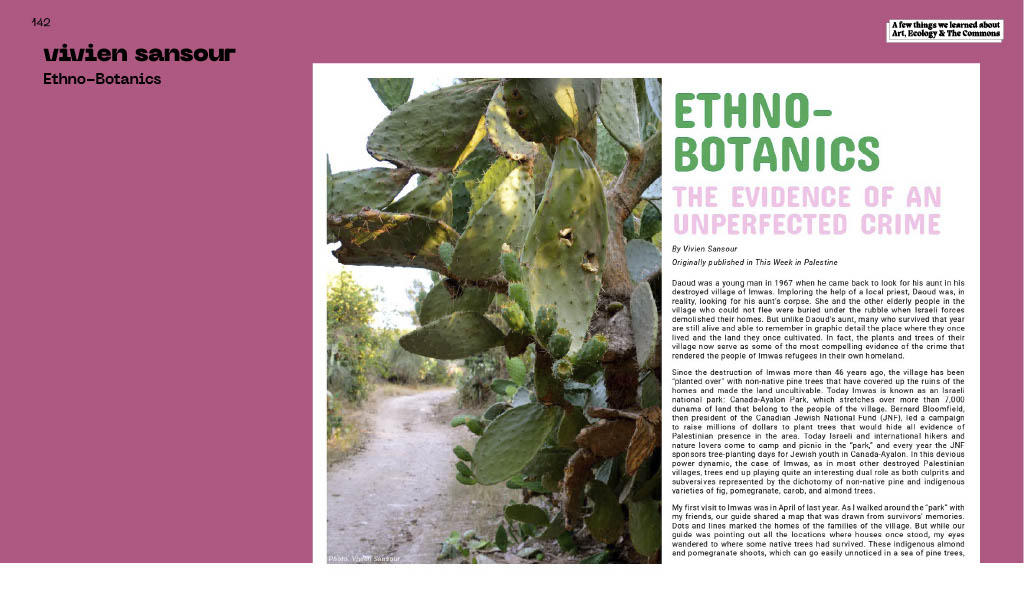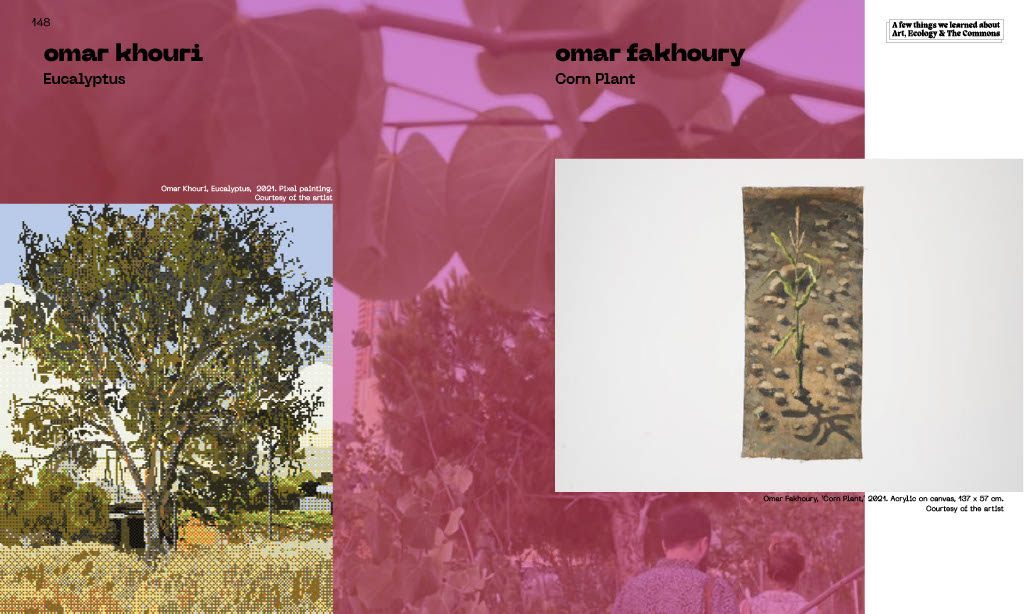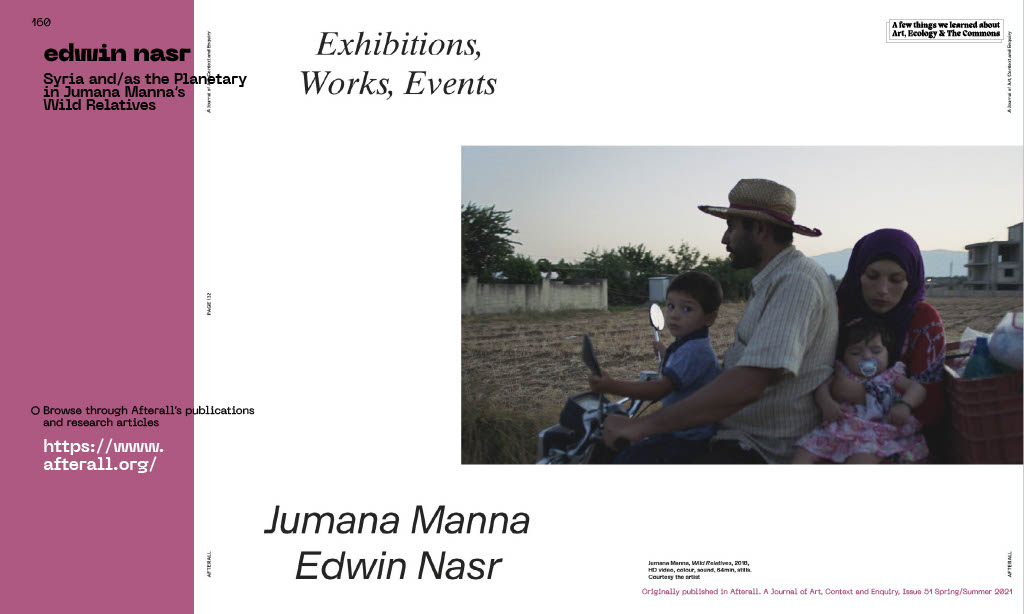A Few Things we Learned About Art, Ecology and the Commons
Research Tools
2021
Art, Ecology and the Commons took place between August 27 and September 5, 2021 in Beirut, yet its pertinence and necessity continue to resonate in the unrelenting volatility of our current situation: an unresolved waste management crisis, a sharp 90% on-going depreciation of the local currency, a complex political deadlock, a rampant pandemic, and a plummeting economy exacerbated by strict Covid-19 lockdowns, were all met with the devastating Beirut Port explosion on August 4th. Catastrophe has only since ensued, with an inevitable economic collapse pushing the country to the brink and corruption still coursing through its every vein, leaving it ill-prepared to face the global calamities also raging on; from economic uncertainty, sociological and demographic unrest, to the climate and environmental emergency.
An agonizing community came together to seek refuge in the foliage of our young urban forest, protected by the shade of its trees, equally as inspired by their interdependence and resilience despite a broken environment along the bank of a waterless river. For ten days, we gathered for walks, talks, films, meals, planting and care, breathing life into our forest and the minds of those who joined us, citizens and artists alike. Inspired by our reading of The Undercommons by Stefano Harney and Fred Moten, it is what we have been calling a collective Study.
“We are committed to the idea that study is what you do with other people. It’s talking and walking around with other people, working, dancing, suffering, some irreducible convergence of all three, held under the name of speculative practice. The notion of a rehearsal—being in a kind of workshop, playing in a band, in a jam session, or old men sitting on a porch, or people working together in a factory—there are these various modes of activity. The point of calling it “study” is to mark that the incessant and irreversible intellectuality of these activities is already present.”
– Harney, S., & Moten, F.
Art, Ecology and the Commons’ program sought to harness the forest’s togetherness and collective practice to inspire new methodologies. In a time of extreme crisis, it brought to light people’s overwhelming engagement and desire for resistance. This, however, was a not singular pursuit, conceived in search of resolution. It was instead designed to build curiosity and open-ended inquiry, prompting the unexpected and emergent to manifest, in the hope of affecting long-term change.
This digital publication embraces an experimental format of spontaneous gathering, and furthers the curatorial methodology of the Study. Multiple voices, contexts, and perspectives are juxtaposed, different forms of narratives featured, and various knowledges woven together. What does a small urban afforestation site neighboring a highroad in Lebanon have in common with the threatened rainforest of Amazon? Jumping between local and international scales, the transborder character of Art, Ecology, and the Commons unfolds throughout the publication.
This e-publication stems as much from the research references, conversations, and sister initiatives having guided us through the project, as from the takeaways, propositions, and new questionings prompted by artists, participants and community members we engaged with during the program in August 2021.
Can relating our own bodies to growing shrubs foster greater empathy and care? Can looking at forests’ complex modes of organizations inspire us greater solidarity? If a polluted river makes us realize the suffering we cause and endure, a traveling seed can whisper its own tale to make us hope, and cope.
As such A Few Things we Learned about Art, Ecology, and the Commons plants the seeds for urgent reflections on our ecological relations and modes of collaboration.
Approach this editorial compilation as a curated playlist: play, scroll, skip, pause, replay, and find those recurring motifs intertwined throughout its five chapters, following the threads of mycelial networks.
